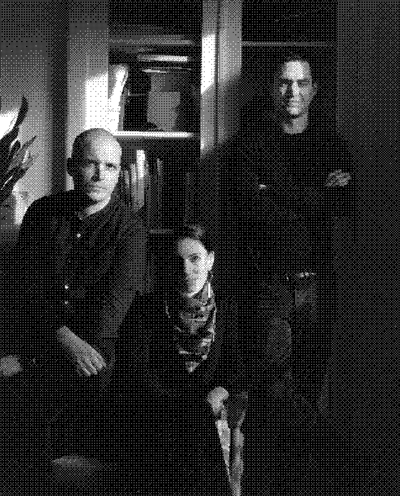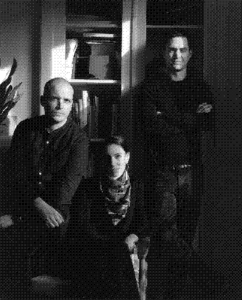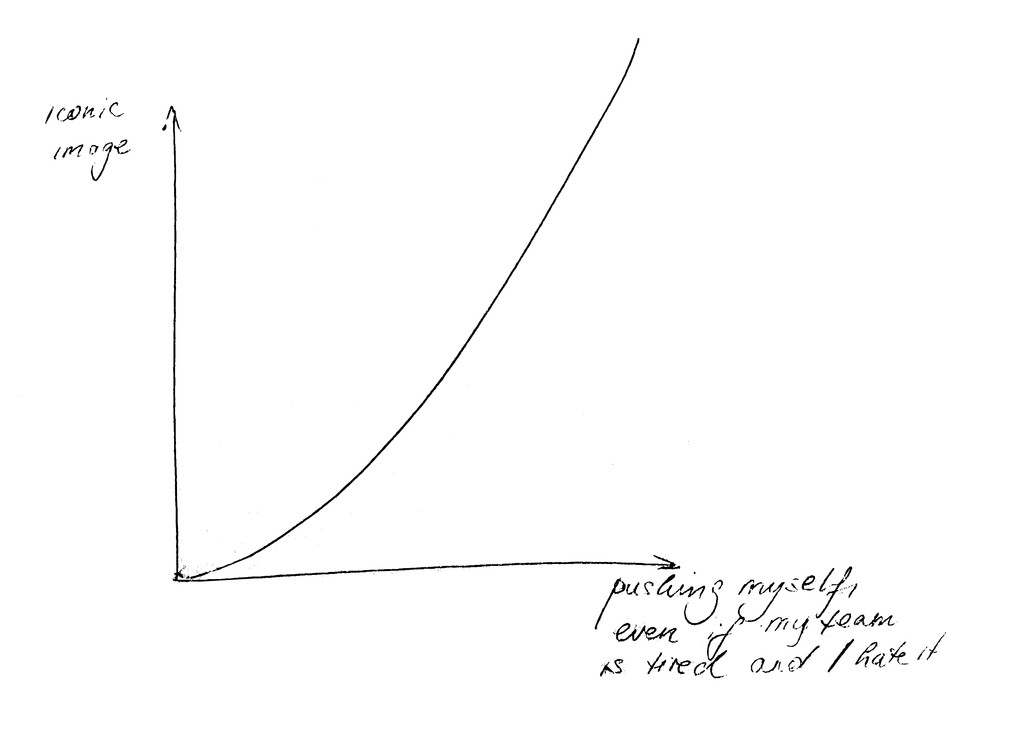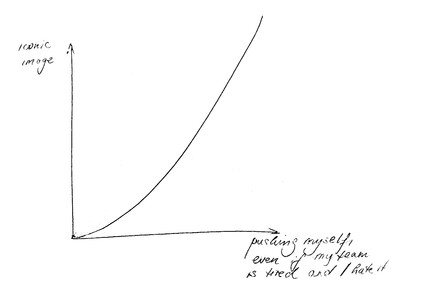Could you introduce yourself?
My name is Elizaveta Porodina. I am 34 years old and I’m an artist and fashion photographer, currently recording from Munich.
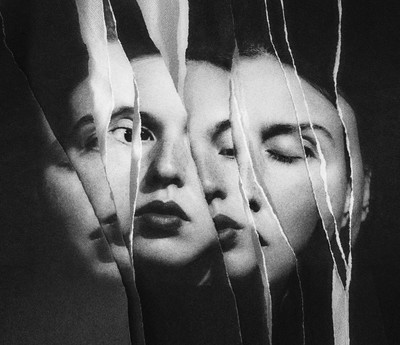

Self-portrait
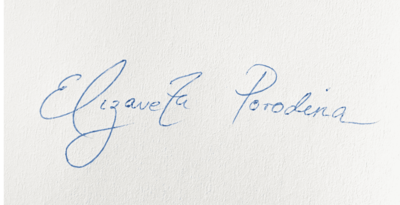
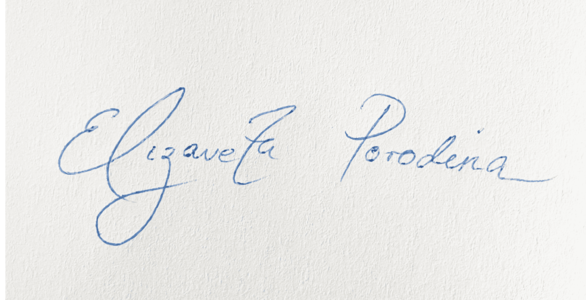
What’s your current state of mind, as of the end of July 2021?
I’ve been group‑pressured into thinking about vacation. I actually don’t care about it, but since everyone in Paris has been only talking about going on vacation, I also decided to go, so I’m preparing to do that. I realised that by finding it impossible to have meetings. I’m a workaholic at heart, so to me, taking a month off is a little bit crazy, but my husband and I booked a vacation and then we’re going… probably.
How did you go through the Covid crisis?
First of all, I don’t think it’s really finished. We might deal with it for the next couple of years, and traveling – which is an essential part of my work – is still quite complicated. I’m definitely taking this into account and quarantining wherever it’s necessary. When it first started, it was an interesting time, because early 2020 marked the arrival of new energy in my life. I was so energetic, I felt powerful… full of magic and full of new power. I was doing my usual rounds: Los Angeles, New York, Paris, London… And on my third round, I was in New York for an editorial shoot and then realised we were the last people to enter the country because they shut down the borders. The mood on the editorial was terrible! Everyone was really depressed and asking themselves how it was going to be. Then I went to London, and I had to cancel a big cover shoot for one of my favourite magazines with a favourite actor of mine – because no one was willing to do it anymore. I realised too that I couldn’t do it anymore, as I couldn’t carry the responsibility.
So we went home and we started figuring out how I can carry on with all that residual energy that I had left, but without traveling and without actually seeing people – because no one wanted to be in the same room with other people for a while. So my husband and I figured out techniques of how to photograph via Zoom – as a lot of people have done at that time – and I particularly enjoyed it. To me, it wasn’t a crutch: I said to myself: “If I shoot like that for the next couple of months, I’d better develop something that I’m proud of for the next couple of years or that could be a new “tentacle” of my work, in a way. Thus, I really put energy, time, love, and passion into it, and a lot of technical knowledge. We ended up shooting a couple of projects that were really significant in my career and in my art. We shot Chloë Sevigny who was nine months pregnant and delivered her baby a week later or so, and a whole big project for Carolina Herrera. We did multiple covers for Vogue China and later I shot a beauty editorial for Dazed magazine with my muse Maggie Maurer – using this technique when London went into its third lockdown. So I would keep doing it, I would just do it with people that I really fully trust, whom I know are artistically as inclined as I am, who understand about lights and composition and who really can collaborate. Also, I needed to know they trusted me and would listen to me, and also be able to contribute from their side. Because it is twice as exhausting as a usual shooting.
I personally enjoy Zoom meetings a lot. Because I can be very social, but I can also be very sensitive. Sometimes I’m quite overwhelmed by a personal meeting because you take on a lot of the other person’s energy. When it’s good energy, that’s fantastic. When it’s bad energy, it can be devastating to me, I can be affected by it for a couple of days.
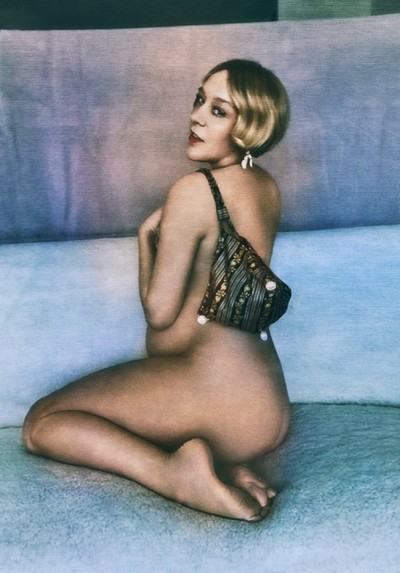
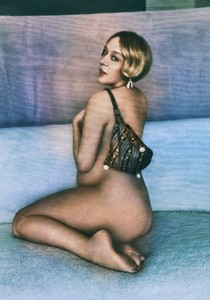
The Cut - Chloë Sevigny - Zoom
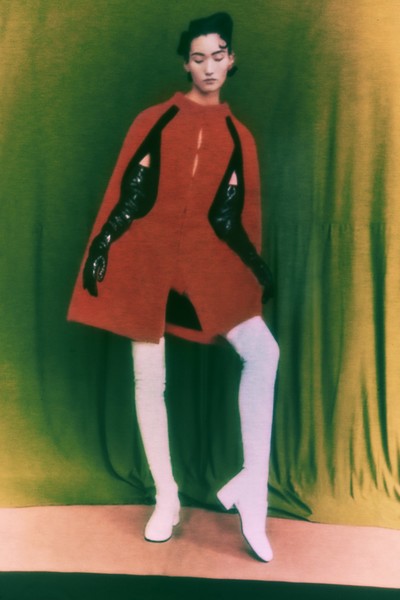

Vogue China
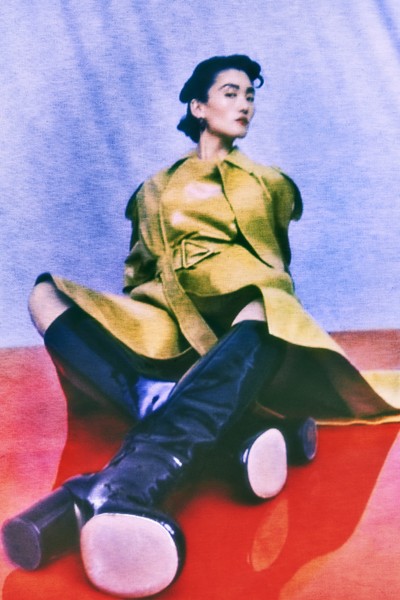
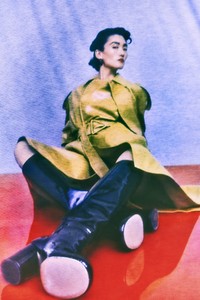
Vogue China
Did you also take some time to reflect on your job, the profession itself, the industry?
I didn’t take any time at all, I prefer being in action. I learned most things by just doing them. I have natural pauses in my work in a way, so for example I will have phases of a month or one and a half months where it’s just “Shoot! Shoot! Shoot! Shoot!” and then there will be a natural pause where no one calls and I don’t answer (laugh). At that moment, I just do the post‑production and think about things organically, naturally. I don’t take time out of my schedule to think about anything on purpose, it just comes naturally. It’s almost like the movement of the sea, the tide, and the ebb, and the flow. It’s like that. There is time to work and then there is time to contemplate.
If we go back in time, you studied psychology, were you already doing photography at the time?
I always was interested in art since I was little. We moved to Germany when I was 12 or 13. It was quite a rough moment in my life; I had to learn a new language, adapt to a completely new school system, carry the pressure of kind of providing administrative support for my whole family as I was the only person who spoke the language. I had to go to all of the offices and was responsible for the important paperwork. Thus, I kind of missed out on socialising with people or learning social skills. I actually spent all my leisure time painting. It catalysed the whole thing because when you don’t find friends, you have a lot of free time (laugh). You start subliming all of those angry feelings that are created inside of you, and I had a lot of them! I was painting a lot, writing music, dreaming of becoming an opera singer, and learning that as well. In a way, it was quite scattered. I knew that internally I wanted to be an artist, but I most certainly didn’t know what kind of artist – and there wasn’t a lot of support from my environment towards that idea, because my parents definitely wanted me to do “something safe”. I didn’t have any positive feelings towards an Academy of Fine Arts or any other art school: I didn’t want to hear other people’s opinions on my work. When the time came to decide what to do with my life, I had some drawings, paintings, and whatever, but it was not something I wanted to show to anyone, and it was definitely not a clear-cut career. So I looked at other options and as my grades were really good, I could more or less decide to go to any type of university. I chose Psychology and that went well. I studied it for four and a half years and was working in an eating disorder clinic during my studies, and then I worked for two years in an acute public station of psychiatry in Munich – which I liked, but I just didn’t love it. At that time I was already taking pictures and photographing… I would say that before I took the step to try the whole thing full time, maybe three years past where I was just trying out different things.
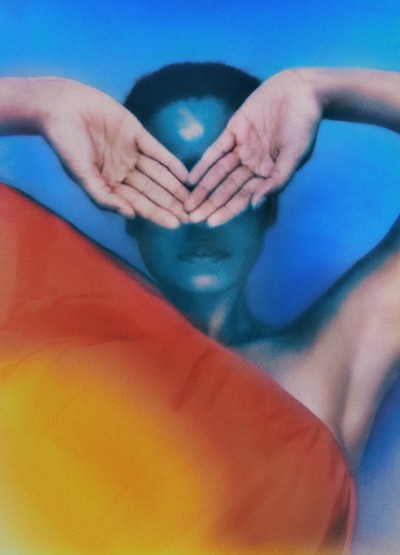
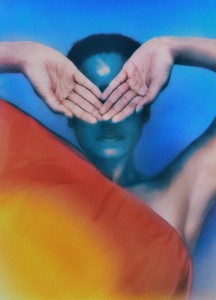
Caroline Herrera - Vanity Fair US
Do you see a connection between psychology and photography?
Psychology or knowledge of psychology is in everything, right? Because everything that is merely a little bit social is connected to that. The way I do photography, which is always collaborating in big teams or smaller teams is extremely social. I am obviously very appreciative of what I learned during my psychology studies, but what really set me off being a better person, being a more social person, and being open to other people is definitely photography. I remember the event that really hooked me on photography was when a young designer from an art school asked me to shoot her lookbook. I had no idea what she meant by lookbook. I came with my tiny camera; she had five models and two locations, she wanted to shoot indoor and outdoor. I didn’t feel overwhelmed at all: I was just happy and euphoric. I didn’t want to eat or drink. I was just taking pictures and enjoying the fact that I was finally able to live out my vision and people listened. But more than that, I was creating something interesting, something magic, things the way I saw them through the camera. That’s the thing that sets me off every time: that what comes out of the camera is so much more than the sum of the team efforts. When I had this realisation, I thought I needed to carry on. I never had this type of feeling with any other activity I was doing before, even psychology.
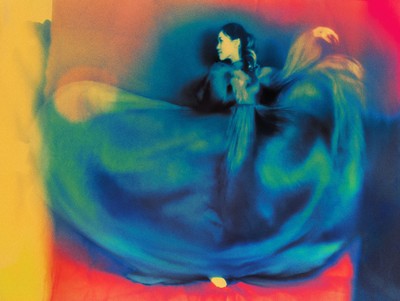

Caroline Herrera - Vanity Fair US
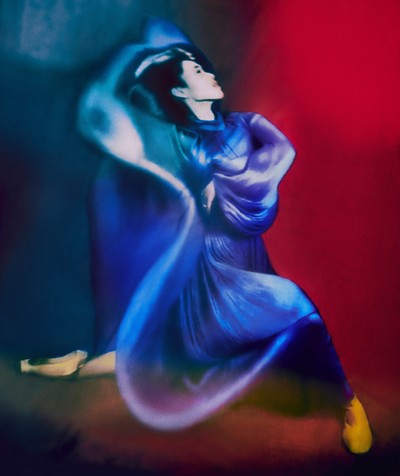
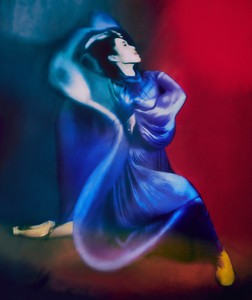
Caroline Herrera - Vanity Fair US
Was it at that time that you said: “OK, this is gonna be my job”?
I was never thinking about this whole “making a living out of it” thing. I know, it sounds strange, but I have this internal feeling that I don’t need to worry about money – which is paradoxical because I don’t come from a rich family at all and we lived in quite complicated conditions for a while. My parents actually had to worry about money for a long time, so I don’t know whether this feeling is irrational or not. I guess I just hoped that if I created something that is unique enough, then money will come automatically.
Obviously, from my perspective now, I am surprised by my younger self having this very stern confidence. But it’s the same me and it’s the same confidence that I have now when I say: “In a couple of decades, I will be known as this and that”. It’s just an inherent knowledge about yourself. Who are you going to be? Who are you going to become? Who you are inside, is it just a certain chemical process – at least in my brain – or a certain knowledge of my soul? It depends on what you believe in.
How did you develop your style?
I was looking at my own pictures from when I started 10 years ago and they look very similar – obviously, much rougher. The post‑production on them is not my favourite but they look very similar to what I do now. I had a pause in the middle of those 10 years where I felt very ambitious in regards to trying different other styles and to being everything that I could possibly be. It felt really weird to have already found who I am and what I want to do. In the beginning, it felt wrong. I was like: “Wait, that’s it? That’s what I am doing? No, no, no, wait! I’m going to become a great documentary photographer!”. I had a couple of years where I was doing a lot of things that I wouldn’t do anymore. I had fun doing it, and I had fun trying it out. When it was time, I came back to what I liked emotionally speaking, and what I really enjoyed doing. There was a concept behind it, there is an idea of what I really like, which is inherently painting. I really am inspired by painting, probably more than I’m inspired by photography, just because this was my initial inspiration. My mother took a lot of time showing me art books, bringing me to all the museums, showing me modern art and classical art. So, it’s not as if it was a snobby decision from my side to be more inspired by paintings rather than photography. It is just what I really loved as a child and it kind of never changed.
What were those very specific references your first loved when you were growing up?
We had this book – I don’t even remember what it was called – but it was very thick and it was something like “Best Masterpieces of the World” or something like that. It was a span of all kinds of genres that you can imagine: from Expressionism to Impressionism, and Retrofuturism and Cubism, and all of that jazz. I really enjoyed Degas and Renoir and Gauguin, but there were also some Russian artists that were very inspiring, like Petrov‑Vodkine, or Vrubel: they all had very different techniques, but there were always elements that sounded true when I saw the pictures: the free, wild, and savage use of colours where colour is not supposed to be. That always set me off. Or even when people were disproportionate, or when they appeared kind of like detached from the world or even standing out like a sore thumb, that was always kicking me. Not always positively, but it really set off a process in me internally, and I guess this is what it still does. Because this is how I genuinely feel about myself in regards to my environment.
Currently, do you have new sources of inspiration?
It’s an interesting question I get asked every time I get interviewed, and I always answer differently. I guess there is a big deal of research that goes into every project during my daily life. Sometimes I just wake up and I think about pictures. I go to bed and I think of a picture. There is also a great deal of research happening while I’m on my phone. There are even movies that I watch and screenshot while I watch them. Or when I go past the street, and I see an interesting situation, I take a picture of it. All of my devices are overfilled with images. But there is a big part of me being inspired by certain situations that have just happened to me. For example, things that can be very technical; a couple of years ago, my husband and I were going down a lively street in Portugal and we saw a certain glass construction, and the way my face was reflecting in it, the way the lights were installed towards the glass, I was like: “Wow, this is so interesting! If we could reconstruct this in studio and get to play with it, what would happen?” A lot of my work is about coding, then coding it more, then coding it more, and then only taking a little crop out of that. It ends up even more “packed” to make it looks like a dream, a premonition, or a metaphor. Thus it can be very technical. It’s not only pictures of the internet, it’s also really inventing things in a way.

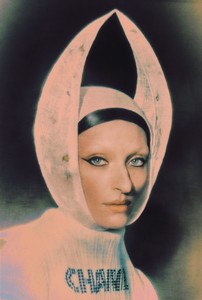
Dazed - Chanel Beauty
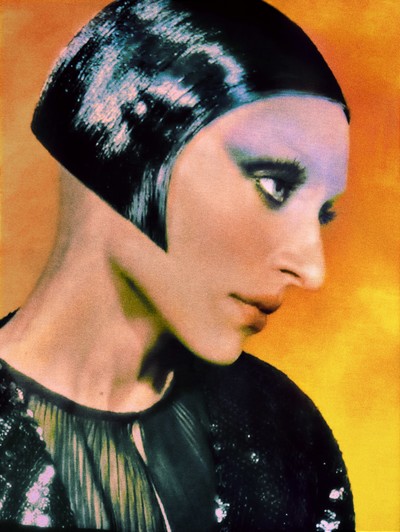
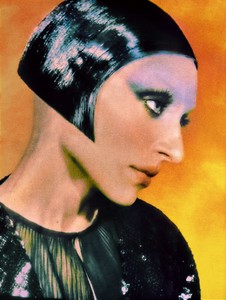
Dazed - Chanel Beauty
How do you proceed when you are given creative references for a shoot?
It’s not like they don’t give me creative references, but no one ever forces any creative references on me. People always expect me – I guess, because of my portfolio and because of the impression they have of me as a creative person – to refill the whole thing, in a way. So if I get a creative reference that has 12 pictures or more, I will use the ones that really speak to me, and then I will fill it with more images to enrich the story. I obviously expect the other creative person to go back and say: “I don’t like this, I like that…” It’s like a conversation but with images… I just make sure in the process that I use the creative references that really communicate with me: “Yeah, I see how I can translate it to my work”. But recently, people haven’t really been doing that. I had a project where the brand came to me and said: “We want to do stills”. I asked if we could also do model shots, and then I started doing them. They were like: “Do everything on the model because this looks amazing!” Then the whole shoot ended up being on the model, and I was really happy about that. It was a very creative, very innocent process, with barely any creative references. It was like experimenting in studio, which was amazing.
How do you apprehend the whole process of a shoot?
I see myself as a person who likes to take a lot of initiative because I feel it’s a great exercise for me as a human being. It makes me use my brain and my creative juices. I like to question everything that comes my way – not critically, but just turning every stone: “How can we do this even better?” or “How can we add to this?”. I obviously never force things on anyone but I know that the best results we’ll get, only will be created if it’s something that I like. So I just try to suggest things that I think we will all enjoy.
You obviously work a lot with art directors. What’s your favourite type of art director?
I guess the ones who combine the team the way they think it will really take off, and then collaborate with me on set creatively. A lot of people actually assume – especially art directors – that it will be a tough collaboration because I seem like a strong person. But I actually love collaboration. I really like people to contribute. That’s the reason for which I shoot digital. And I like to tether, I love that the pictures come out immediately so that everyone can stand in front of the computer and give me their reaction and be like: “Oh, the hand looks shitty. Can we correct this? And that?” I like this type of stuff because I would hate myself coming back home and being like: “Oh, the hand looks shitty, why didn’t anyone say anything?”
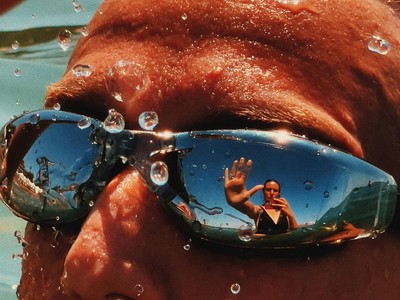
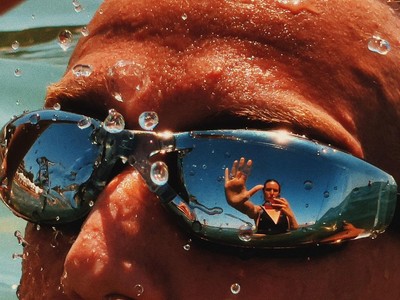
Personal and explorative work
When do you feel a picture is done? Is it when everybody agrees on it?
Not really. It is done when I’m done. Two things go into it: It’s definitely a feeling, and then I have a certain control mechanism over it so when I have the feeling that it’s really working, I will still shoot probably a round or two. As I mentioned, I tether, and obviously, I get to see a little bit, but I also don’t want to take a shot, and then look at the computer, take a shot, and look at the computer because I kind of feel it’s disrupting the flow. I want to be there with the model, so the only moment that I’m doing something on the computer is just when in the beginning, I adjust the colours, and sometimes in‑between the rounds. So I technically get to see maybe four pictures or something like that. It’s a mix of shooting digital and analog if that makes sense: I don’t really see what I’m doing, I just feel it. So when I get the feeling that it is great, I then try to be more precise in the last couple of rounds. Because I’ve experienced that: coming home and being like: “Oh, that was 80 %, the feeling was wrong”.

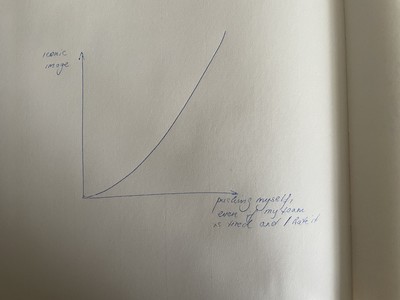
How do you make your teams? Do you prefer to have a stable team like a set designer, a stylist, and so on, or do you like to change and try new collaborations?
Both. In every city, I do have a team I know who are like my family. Then I really like to try new people as well. If I have a project, I will try to put my family on the project, but then if I understand that it is a project where I could really try to work with this set designer, that it would be up his alley, I would definitely give it to them.
You mentioned shooting via Zoom during the Covid and working on this with your husband. Can you describe how you work together?
Yeah. My husband is actually my technical and lighting director, so we always work together. He’s originally a lighting and tone engineer at a German theatre. We actually met when he offered me his services as a lighting technician. It gives the lighting a big chunk of innocence, in the fashion sense of it. It brings a lot of advantages and a lot of storytelling with it and a lot of three‑dimensionality. But we often also argue on set, because I really love the storytelling aspect, but then you also have to pay attention to different nuances. So this is where we always clash. (laugh)
You mentioned not worrying about money. Did you have in mind some steps you wanted to do to develop your career?
I started roughly 10 years ago in Munich, which has a local fashion scene but nothing like Paris or London. It’s a different range of campaigns or clients. When I started, I had this feeling that I was going to be who I am, but I didn’t have a real idea of what I had to overcome, or how hard or how exactly I had to work to reach my strategies. And since I have never assisted anyone and I have never really put myself in the context of working with another fashion photographer, I had to learn all of these things myself piece by piece. At the same time, there was a big resistance in me to really play the game and enter the stage, meaning being social, creating a network, and working for free, and all of these things. It was just a big step that I had to overcome for myself and decisions that I had to make, and I didn’t make those decisions for a very, very long time. If I was shooting something for free, it was just for myself. When I was shooting for brands or editorials, I was only taking the paid opportunities, which obviously meant that it had to be a lot more commercial than when you pay for yourself and do whatever you want.
Do you invest in your editorials?
Yes, and this is what I wanted to say. For most of my career, I was acting as I described previously, and then I realised that if I wanted to change something, if I wanted to go a step further – because I did a couple of years ago – there was a certain ceiling that I had reached for myself. I felt trapped: “What else can you do? How can you break the ceiling?”, and that obviously meant entering the “ring” and playing the game. It means a lot of investment and a lot of hard work. It means reaching a very new stage of you being social and building your network around you. Strategy can seem like a very cold, practical pragmatic word, but what it really is is self-care. It’s realising who you are, what you really like, who you want to surround yourself with, who are the people that you really want in your life. Who benefits your mind and your passion? Who contributes the most to your art? Who makes you ultimately better?
How did you decide on that, by yourself or consulting other people?
I had a moment, a couple of years ago, where I looked at my Instagram and I realised that there are a lot of things I don’t really like anymore, so I wiped it all indefinitely. I just left a couple of things and I had barely any calls to consultation. There was someone who was advising me, but the pieces of advice and “constructive criticism” that came with it were also something that felt really destructive to my actual creativity. I wasn’t surrounded by agents or a team of strategists or anything like that. It was me understanding what I need to do to contribute and in the meantime, I was also resisting to do it for a certain while also because it seemed very irrational and very wasteful: when you shoot an editorial, you spend like six, seven or ten thousand euros, on shooting something that might or might not go well. If you don’t come from a wealthy background, it is a significant amount, and it just sounds completely crazy. There is still a part of me, in my identity, that is just clutching my head every time I see how much I spend on my art. But whatever I did, it always has kind of worked out for me. 2020 was definitely a year where I got in touch with a lot of people that really contributed to my career and that have helped me greatly to go forward.
I’m a Leo and Leo rises… Every time someone overlooks me, a dominant feeling that I have is confusion by how they could overlook my greatness. (laugh) Today I feel really good, in a responsible position. And I like taking responsibility. I like deserved attention if I feel I’ve accomplished something. I mean, it’s not that I particularly enjoy compliments or anything like that – neither compliments nor “hate” influence my creative decisions or my determination. But what I do enjoy is taking responsibility, doing it, and taking a risk.
You recently shot a campaign for Dior with Fabien Baron. You spoke about steps and ceilings and we wondered if this campaign was a sort of achievement.
It’s a huge achievement because I really love, admire, and respect Fabien’s work. He really is admirable as a person as well. He’s funny and a great type of mentor that I have wished in my life, having him earlier would have been cool. That was honestly a privilege to work with him. Also to see his confidence and the way he decides things on set has reconfirmed my ideas of how I want to work as well. Which is something that I don’t experience often because I don’t often work with people who have that vast experience with so many other photographers, who have contributed to so many genius pictures.

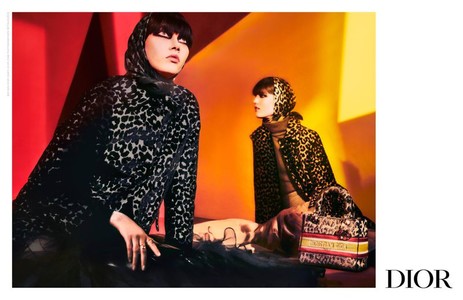
Dior F/W 2021 Campaign
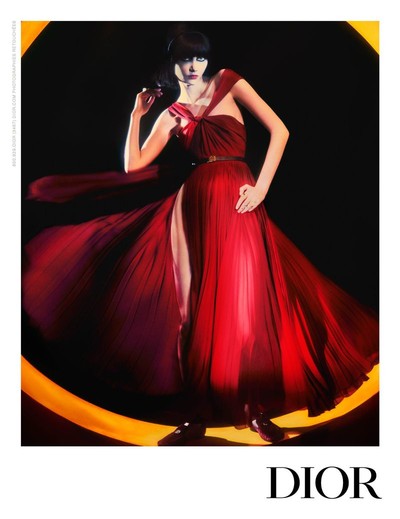
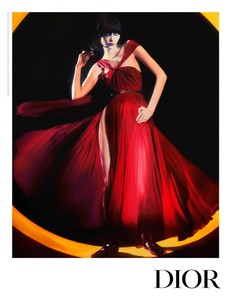
Dior F/W 2021 Campaign
How do you organise at the moment? You said you work a lot with the regular family, but you also have an agent…
I had a manager before, and now I am represented by Concrete Rep., and specifically by Lindsay [Cooper, Ed.] who is one of the founders. This is a decision that I haven’t made with ease or quickly. It’s something that we have carefully tested, and we didn’t go in this relationship in a rush. And this is something that I would definitely recommend to anyone who is looking for an agency: to just really test the waters, to really understand how you both can contribute to this relationship, and what it does for you and what you can do for it as well. I cannot read the young photographers’ minds, but I do remember what I was expecting of an agency when I was younger, and in my head it was some kind of magical unicorn that would make my life better, provides a magical amount of jobs or something like that. But before you get a representation that really suits you, you have to learn everything about yourself, understand what you really want, what you don’t want, how you value yourself, how you want to speak with the client, what you have to learn to make these decisions… Otherwise, you could be represented by any type of agency – no matter how big or meaningful – and it will end in tears, for obvious reasons.
I think it’s hard for a starting photographer to understand because everyone they look up to is represented. So they assume that whatever you say is bullshit. Young people are like that – I know that from my own younger self! I always used to think that whatever is stated to them is kind of like blah‑blah, and I can reinvent the world – which is cute, and sometimes right, and mostly wrong, and one just has to touch the hot plates a couple of times and then understand that it’s not always like that.

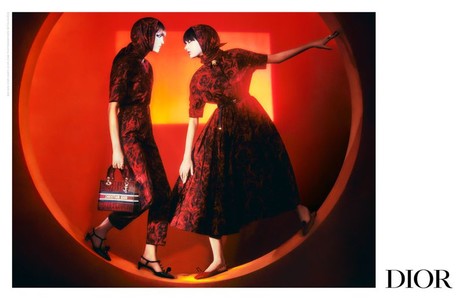
Dior F/W 2021 Campaign
What do you ask and what do you expect now from an agent?
It’s not about the agency that you go with, it’s really about your relationship with your agent. In that way, it kind of relates to psychology and psychotherapy, funnily enough. When people go into psychotherapy, they always think that it’s like a magic pill that they will take and someone will just give them the cure for their mental illness. But it is not like that. It’s a ton of work on yourself, coming from yourself. I will say that 70 % of the success in your psychotherapy will depend on whether you are compatible with your psychotherapist, whether you like them or you don’t. There is going to be a lot of real human interaction that resembles friendship – but it’s really not quite friendship. It’s more like a work relationship, a friendly collaboration, it’s a very grey‑zony situation, and you need to truly enjoy this person. You also need to really trust this person, you need to really respect them, you need to want to talk to this person five times on a daily basis if necessary. You need to be able to invent creative ideas together, and it needs to really spark between you two in a way. So you see how precise and specific this is. Obviously, you cannot have this type of relationship with any agent out there. It needs to be that one person. It’s almost like finding a relationship, like a partner in life. And that can take a lot of time. Some people find that immediately, some people find it after five years, some people find it when they’re 60. It’s not a relaxed, easy peasy thing to do. You also shouldn’t be trying to be a good client. You should be exactly who you are. Obviously, trying to be the best version of yourself, but not accommodate yourself to any agent out there. You need to find the one who is truly going to be compatible with you, just like clicks. I don’t think you can understand that as long as you haven’t experienced either that or the opposite. When you try to be a good patient lying to your therapist, you’re like: “Oh, everything’s fine, I haven’t cried”. And it’s not fine, you’re trying to be easy, but you’re actually intense and annoying. You want to know every single detail about the job and the client, and you shouldn’t try to accommodate your agent, but you should actually be aware that you need to be exactly who you are. Because this is how you get the best results.
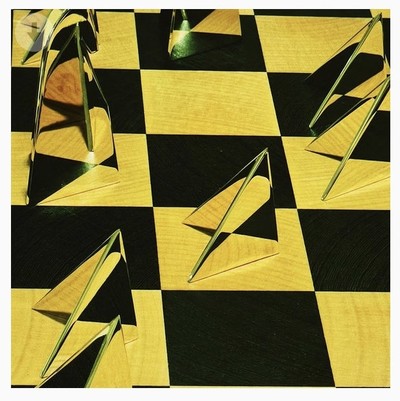

Personal and explorative work
How do you think about the next phases of your development. Do you have some objectives in mind?
I have a 50/50 approach – or maybe it’s a 30/30/30 approach – where I have a list of people that I want to meet. It’s a long list that my agent and I have created together: models that I want to work with, talents that I want to work with, sometimes ideas that I want to work on. Sometimes it’s something that I already fixed in the beginning, and then a lot of these things (that’s the other 30%) get born out of creativity with my creative family. For example, we work a lot together with Cécile Paravina. We have a lot of things in common and a lot of ideas just get born out of: “Oh! This is what we should do next! And then we go with this model and this model. She’s really amazing! Then we should do this, and that!”. And then there is the last third, where I know that I have long‑term goals like exhibitions, books, experiences, experiencing other formats in my work. Then I go about them methodically and cautiously. I try to select the best venues, the ones that will be the most compatible with my work and my ideas in how I want to show my work, and selecting publishers.
Do you feel there’s something you’re not doing that you should be doing?
You’re actually talking to me at a good moment where I definitely am in my comfort zone, and any problem that I have, I tackle it. If I feel something is missing, I just fill the gap. So it’s been a good year for that. But I always question myself, I’m very self‑critical. This is something that I intend to work on in psychotherapy, I would love to actually have a whole list of issues that I want to work through.
And that’s very strategic as well.
If you go into psychotherapy, you’re a client. You have to be very strategic about the issues you want to work on. There might be things that are quirky about you, but that you don’t want to change. And there are things that you’re like: “Oh, it really helps neither me nor my environment”. I have a list of things that I want to change. One of them is I’m really self‑critical to a point that it doesn’t help anymore. It just butchers me alive. I could definitely take away a piece of that. When I’m shooting, it’s maybe less so like that; I have maybe mostly a healthy dose of criticism. I just like to analyse and go about it very pragmatically most of the time, and then, in the post‑production process, it can weigh very heavily on me. I may become a little bit too negative or very emotional about my outcome. That is not unique, a lot of people are like that. I’ve talked to other photographers and artists, and they all have this kind of phase of “I’m a piece of shit” while selecting pictures. But it doesn’t help. It’s really depressing. So I would like to get rid of that, at least.
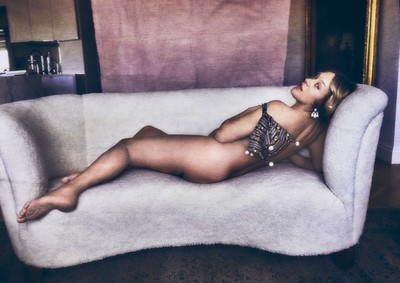
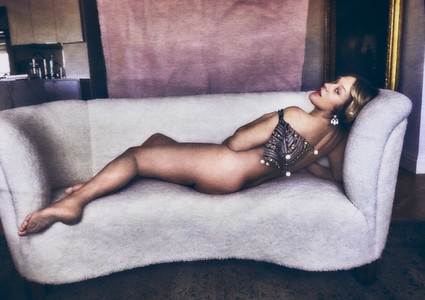
The Cut - Chloë Sevigny - Zoom


The Cut - Chloë Sevigny - Zoom
When did you start sharing memes on Instagram?
I don’t remember. Maybe last year. Everyone assumes that it’s a strategy, but they are just things I truly find funny. I don’t like taking pictures of my daily life because I feel it’s mundane and very subjective. You could also share daily events, information, something about Covid, or politics but I’m not ready for this most of the time. Every time I posted about issues that really are close to my heart – e.g. abortion bans in various countries – it resulted in either heavy discussions with people on Instagram about religion or politics or even worse – terrifying hate messages, death threats. I feel like it’s really misplaced and misses a lot of nuances. On the other side, there is this thing: humour, which I find really enjoyable. Unfortunately, it still provokes a lot of discussions. I will definitely get messages every couple of weeks where people will be like: “Why are you disrupting your beautiful art world with these stupid memes?” or like: “Are you OK? Because you have been posting a lot of memes lately and I’m here for you, or if you feel suicidal”. Now maybe it’s a bit less because people now assume that I’m a meme Lord. (laugh) But this is my personal interest. A big part of my family is Jewish, and I guess I have a very Jewish mentality, part of which is having this very specific flavour of humour where you laugh a lot about sinister things. It’s not even black humour. It’s specifically Jewish humour where you take something that is maybe melancholic, or sad, or really tragic, and then you turn it into a joke because this is the best way to deal with it, and the most effective way to deal with it. Well, that’s just how I feel.
Are you worried about the evolution of the photography industry?
I’m not worried. I feel like there is enough room for everyone. The whole problem of over‑saturation is a construct, honestly, and you can view it like that. Or you can view it as a perseverance thing, where, sure, there is a moment in time where it seems there are a lot of people, but then how many people are there who really combine all the qualities that you need to persevere in them? You will always find it’s physically impossible to have too many of these people out there. Because even if they have all the qualities, they might not have the interest in the end. Or they might have the interest and the talent, but then not all the qualities. So it’s never really oversaturated and everyone who wants to be somewhere will be there. That is just how I see it, and how I’ve always seen it.
I feel there is a big interest in being really creative. I feel people are more free, and they are more interested in unique visual solutions – which include a big range of different methods like opening themselves up to really interesting visual solutions. Obviously, video is a big part of it. But not only. Even the fact that people are interested in someone like me is a really good sign that people can be more open, more experimental, more daring with what they do. I obviously don’t think that everything’s good but that everything is always equally good and bad, and that the good things can be enjoyed. And then, the bad things can be used as opportunities to create new solutions.
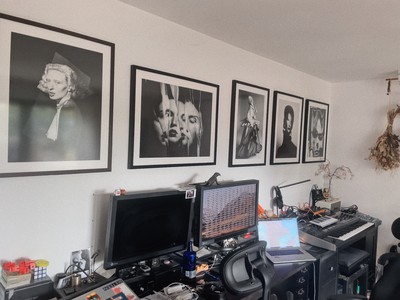
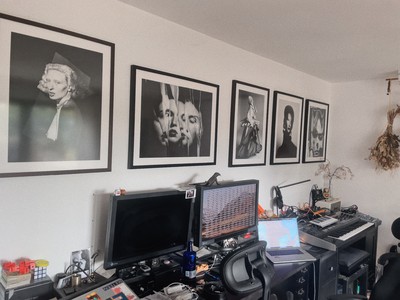
Elizaveta’s desk
It’s a good way to see things: there’s lots of work for the people who are really putting their heart into it.
Totally. And because the technology became so available to everyone… You know how I have this second account where I only shoot from my phone. You can shoot on your phone, there are tons of photographers who just do that – as far as I know. Because the technology is so available, it means that your ideas are the actual value, which is beautiful.
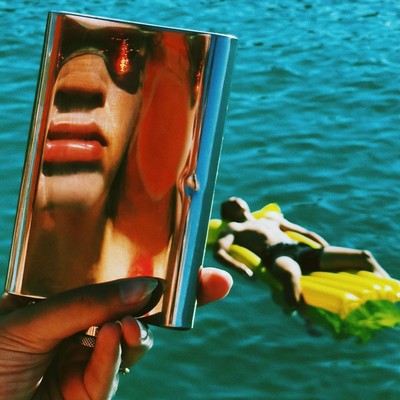
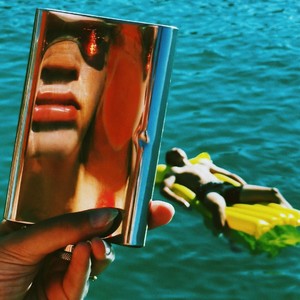
Personal and explorative work
If you could live and work in a different period of time in history, different place, where, when, and what would you be doing?
I really love music. I mentioned previously that I was trying to do opera singing earlier. I had also several bands in the course of the time until 2016. If we knew each other a little bit more or be together on a shoot, you will notice that I sing all the time. I love singing, I love music, I write texts… I really feel the music the same way I feel a visual. I’m not the type of person who is really able to focus on multiple things and be devoted. I think the focus is not a problem, but the devotion and the passion thing is a problem to me: I cannot be devoted the same way to two projects or two different passions. But if I could have a parallel life or anything like that, maybe it could be cool to be in the 1970s or the 1980s, being a really gothy post‑punk band somewhere in England. I would have for sure created something my own and we were actually creating something of our own, but I guess if I could go a different way, I will probably do that.
Are there books that have really helped you?
There is a book that is really significant to a lot of Russians. It’s written by a writer whose name is Mikhaïl Bulgakov and the book’s name is The Master and Margarita. It’s almost like a literary Bible in a certain layer of Russian society. You can enter a taxi in probably any town in Russia and ask the driver if he knows The Master and Margarita and he’ll be like: “Yeah, I read it 80 times!” It’s a very spiritual, essential thing. I really loved this book, it really, genuinely helped me. I think I read it for the first time when I was 13 or 14, we just moved to Germany and it was a shitty time. It did help me and I was genuinely very obsessed with the Christian religion at that moment, so I was reading everything that I could get about it: depictions of Jesus and the New Testament. I was obsessed with it not as in being part of it, but more like observing it. Emotionally and spiritually speaking, it really covered a lot of my needs. Whenever I feel a certain void, I go back to this book, because it really covers all the topics like life, death, love, God and the devil – who is also a big part of my personal creation. All those things: cats, Moscow (laugh)


Sketch by Elizaveta Porodina
Any other advice you would give young photographers or young creative people?
I think it’s really important to work really hard and to practice as much as possible. Because by really working, and really being internally motivated, and being truly obsessed by what you do, this is how you set off the best results. It sounds banal and simple, but what I have observed in a lot of young people and people who studied under my mentorship when I was teaching photography courses, is that a lot of people don’t actually do what they want to do. Many people wait, instead of doing things. Many people are scared of themselves and they’re scared of the potentials instead of just setting off things and doing them. That includes my own experience: I remember picturing myself as one type of artist while I was doing a completely different thing. So there were like two worlds: one internal one, where I was seeing myself as this grand situation, and my actual real world where I wasn’t producing what I wanted to produce and wasn’t making the decisions that I wanted to make. So in a way, you have to learn to match these two worlds together, you have to really pull through. If you have a great idea, go and do it. Find a way and stop saying to yourself that things are not possible, because they won’t be possible then. If you start saying that they’re possible, and if you manifest them, and if you write them down, and if you really scramble these things in little parts of tasks, this is how they become possible.
What do you mean by “write them down”?
I write everything down. I don’t write a diary, I should. I stopped doing it. It’s actually really helpful with mental health. But in work situations, I write things down, as in strategy lists that are really detailed and broken down, and as in what I plan in a shooting. Every picture is literally explained as: this is the makeup we’re doing, this is the styling we’re doing, this is the set design that we’re doing, this is probably the range of poses that we’re going to do… Which doesn’t mean that you can’t change it, but it’s helpful for you to stay efficient. Also, when I have a target or a bigger task, I just break it down into little parts, then I just scratch them off my list, as I go along with it. It’s important to understand that nothing is impossible, as long as you create a range of things that are possible. Writing is a very honest way of communicating with yourself, and it’s a sign of commitment. It’s also a symbol of it becoming a reality.
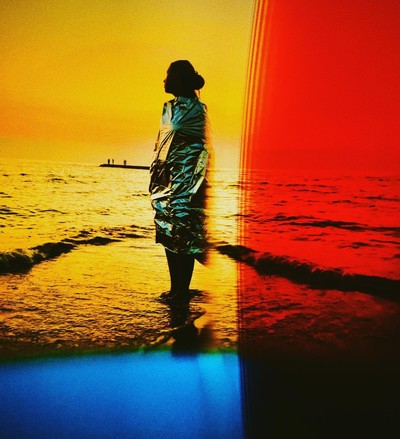

Personal and explorative work
